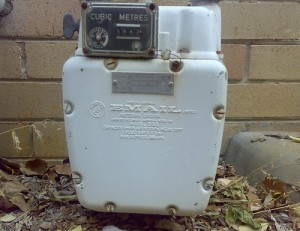Autoresponders are the email marketer’s secret weapon. Many forget this and just mechanically send out messages (or worse send out messages from an email box that isn’t even monitored).
However, used the right way, autoresponders can build trust with your readers, send more visitors to your website, and increase your business.
The most popular emails
Some of the most effective (and frequently opened) are welcome messages, thank yous, and transactional messages. The reason these emails get the best open rates (nearly 50%) is because they are relevant to something the visitor just did, such as sign up or order something. That’s the best time to talk to them and engage, when their interest in your company and products is high.
The next most effective emails are messages that are triggered when someone does something or that are connected to a specific event. This includes activating a special code, an anniversary or birthday, or a renewal date.
The key is to balance your messages between information and sales. Tip too much one way and you’ll get no sales (because you never asked); overbalance the other way and your subscribers will flee.
The right ways to use autoresponders
Welcome new subscribers to your e- newsletter. Give them a clear idea what to expect from your messages. You can even send a sample issue or an extra report as an added bonus. It’s all part of building trust, and establishing yourself as an expert on the topics you choose to write about.
The more your readers trust you, the more likely they will be to buy from you, and to keep buying.
Help new customers use your product/service. Send a series of helpful messages on how to use the product they just bought. If you have a note taking app, highlight how to format the notes, or ways to add video or audio recordings to the text. Point out hidden keystrokes or tool tips. You want them to feel comfortable with the product, happy with their choice, and pleased with your service.
Create a virtual classroom. Offer a series of emails that teach your customers something in your area of expertise. Show them how to get more referral business. Or send a series of tips on techniques for protecting their computers from viruses.
Highlight past posts. New subscribers haven’t seen your old blog posts or read your older reports. If they’re still relevant, add them to your newsletters. Or send them as a separate series all centered around a particular topic. That way, you can get a second, segmented newsletter.
Sell something. Create a collection of past posts, or write extensive new material on a popular topic, and make it into an ebook. Or, turn it into a paid course. This is also a chance to upsell something. People who bought your referral tips ebook might also be interested in a full-fledged course or a membership in a forum dedicated to getting more referral business.
Be responsive. If someone replies to your email with a question, answer it (and as promptly as feasible). It’s a great opportunity to talk directly to a customer (or potential customer). If they have a problem, try to fix it. If it’s a question, give them a thoughtful response.
Don’t just send an email saying, “We have received your message. We’ll get back to you.” That’s almost worse than no response. It’s canned and it sounds that way; it doesn’t show you’re trying to do anything about the problem.
This can also be a good source of more content or new products. Are there questions that get asked over and over? Do many people have the same problem? Use that as the basis for a new course, a webinar, or an FAQ page.
Test and check
Once it’s all up and running, check your sign up rates carefully. See what percentage of subscribers are going through the entire signup process. If they are abandoning it midway, where is the falloff occurring? At the confirmation? After the download (if you have a free report)? Or further down the line?
Look to see which emails in the series are doing better. Do some get opened more than others? Which gets the most clicks? Are you selling more of product A than product B?
Should the emails be longer, or are they too long? You can check this by using multiple calls to action or links to the same spot and looking to see which links get more clicks.
Are your readers largely on desktop or on mobile? If you have images, can they see them? Do you need to change the design accordingly?
Photo: Tama Leaver
P.S. In case you’re wondering, the photo is an electric meter, circa 1968 Australia. EMAIL is an acronym.

